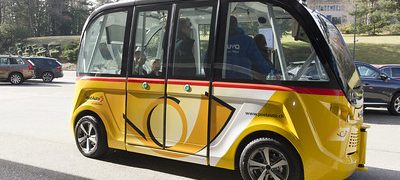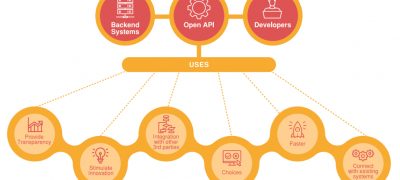
Hello Everyone,
What a strange Independence Day it was, so eerily quiet without our town parade, without the sounds of children lining the streets, the Caribbean steel bands on trucks, the nursery school marchers, the vintage cars with the many politicians who participate in election years, the gymnasts somehow able to do somersaults all the way down the steep hill, and, the best, the zero-emission, non-electric, walking-powered lawn mower brigade.
But we still celebrated the most meaningful part of the Fourth of July, the reading of the Declaration of Independence. Last year’s thoughtful reading on the steps of the National Archives features an introduction with Cokie Roberts discussing the history of women’s suffrage in the United States. Let us remind ourselves during this 244th anniversary month of the ideals of equality, representation, and liberty expressed in the Declaration of Independence. And, if you are looking for entertainment about early US history, watch 1776 and Hamilton for their creative musical renditions.
Stay well and enjoy the summertime,
Sheryl Gross-Glaser
Editor, N-CATT Tech News
Director, National Center for Applied Transit Technology
Community Transportation Association of America
grossglaser@ctaa.org
202.386.1669
N-CATT Webinars
Upcoming Webinars
- Electric Vehicle Technology for Transit – Aug. 4, 2020
- Hydrogen Fuel Cell Technology for Transit – Aug. 18, 2020
- Autonomous Vehicle Pilots and Beyond – Sep. 16, 2020
Visit the N-CATT Events page for information about many webinars.
Archived Webinars
- Open Source Software and Open Data: This webinar provided the definitions of open source software and open data, and explained how they relate to demand-response transportation (DRT), including, but not limited to paratransit, microtransit, human services transportation, ridesourcing (aka ride hailing) taxis, and non-emergency medical transportation (NEMT). Click here for the webinar, PowerPoints, and transcript. (Aired May 21, 2020)
- GTFS Flex: GTFS-flex promises a future with online “trip planning” for demand-responsive transportation, similar to the Google Transit feature and other trip planners that exist for fixed-route transportation. This webinar covered GTFS-flex from a variety of angles, so whether you are a small rural transit agency with demand-responsive services, or a state DOT or MPO planner investigating mobility-as-a-service, or a vendor considering GTFS-flex implementation, this webinar defined the players and offered concrete advice and next steps to public agencies in particular. Click here for the webinar, PowerPoints, and transcript. (Aired June 17, 2020)
N-CATT Factsheets
N-CATT is committed to a no-wrong-door approach to resource creation that serves professionals who need detailed information as well as their partners and colleagues who merely need or want summary explanations and pertinent facts. Our factsheets offer a window into particular topics and a path to in-depth information if the reader is inclined to pursue more.
New N-CATT factsheets spotlight:
- GTFS Flex
- The Stories that Data Can Tell
- Preparing for AVs – National and International Approaches
- Open Source Software and Open Data
Opportunities
Inclusive Design Challenge
U.S. DOT opened the Inclusive Design Challenge, a competition seeking design solutions to make future automated vehicles more accessible to people with disabilities. They seek innovative design solutions that can enable people with physical, sensory, and cognitive disabilities to use automated vehicles to access jobs, healthcare, and other critical destinations. Proposals are due Oct. 30.
Funding for Public Transportation on Indian Reservations Program
The U.S. Department of Transportation’s Federal Transit Administration (FTA) announced the availability of $5 million in Fiscal Year 2020 competitive grant funding to support transit services for American Indian tribes and Alaska Native villages in rural areas. The deadline for applications is Aug. 24, 2020. FTA’s Tribal Transit Program is authorized by Congress to support public transportation for federally recognized Indian tribes and Alaska Native villages, groups, or communities, as well as to meet the needs of older adults, people with disabilities, and youth in rural areas where transit is sparse. The funding announcement also includes criteria in accordance with the R.O.U.T.E.S initiative.
Opportunity for Comment
The Administration for Community Living (ACL) seeks input on the Strategic Framework for Action: State Opportunities to Integrate Services and Improve Outcomes for Older Adults and People with Disabilities. The Framework supports state efforts addressing holistic needs of older adults and people with disabilities through program coordination. Submit feedback to ACLFramework@acl.hhs.gov by Aug. 31, 2020
COVID Resources and Events from Technical Assistance Centers
National Aging and Disability Transportation Center
- Webinar: The Impact of COVID-19 on Transportation Services for Older Adults and People with Disabilities: A Conversation with Volunteer Driver Programs – July 23
- COVID-19 Resources webpage
National Center for Mobility Management
NCMM hosts an ongoing survey on its COVID-19 page to gather information about how transportation services and transit are adjusting and operating during the pandemic.
National Rural Transit Assistance Program
Shared Use Mobility Center
- COVID-19 Resource Homepage
- SUMC has examined transit usage during the pandemic as well the wave of street openings that allow for greater access for pedestrians and bikers.
Evidence of COVID-19 Transit Safety
There is a significant fact for transit to shout loud and proud about. Statistics are showing that riding transit – with a mask – is safe. This fact can be used to alter the current misimpression that riding a bus or other transit vehicle means somehow putting oneself at risk of COVID-19 exposure.
Why are the numbers so good? First, most people are not spending much time talking or shouting to strangers while traveling on transit. Most quietly sit or look at their phones or reading material. This means few droplets are making their way between and among people.
Safety = Masking Wearing
Second, mask wearing has become acceptable and nearly universal practice in many transit systems. Mask wearing has protected thousands, if not millions, of riders in transit systems in the most dense cities on the planet, including Tokyo and Hong Kong, where transit ridership decreased, but never plummeted during the pandemic. Those places have substantially reopened without spikes or surges, though the number of novel coronavirus cases was never astronomical, and quarantine and contact tracing protocols were diligently carried out. Even in France, with a very different culture and virus experience, the data shows the same transit safety story. (Keep in mind that there is concern that the lifting of many international travel restrictions may require renewed vigilance.)
For more details, read:
- Fear of Public Transit Got Ahead of the Evidence – published in The Atlantic.
- In Japan and France, Riding Transit Looks Surprisingly Safe – published in CityLab.
Data Sharing Guidance for Public Transit Agencies
Transit agencies create and collect valuable data: Route information, schedules, and passenger behavior are just a few examples of data that transit agencies find themselves collecting. This data can be analyzed and employed to improve transit services. As the value of data becomes evident, sharing data between agencies is seen as an invaluable opportunity. TCRP’s recent report, Data Sharing Guidance for Public Transit Agencies: Now and in the Future provides a guide for managing and presenting data at and among public transit agencies, outlining the different ways data can be shared, the benefits that come from sharing data, as well as risks to be aware of.
Models for Sharing Transit Data
The TCRP report identified two main ways that transit data is shared. The first model is public data sharing, also called open data. With this kind of agreement, data is shared online openly, usually through a data repository or an Application Programming Interface (API). Open data can be used and accessed by anyone interested in it, and it is available publicly in its complete form. The second way data can be shared is through a private data sharing agreement, which specifies what kinds of data are shared, and who can access it. Often researchers enter into a private data sharing agreement with agencies, and the agencies usually benefit from this research partnership.
Goals and Staffing
When an agency decides it wants to share data or use shared data, the agency should be clear about its goals and devoting sufficient staff to ensure accomplishment of those goals.
- Establish clear goals that the agency hopes to accomplish by utilizing the data. A few goals that agencies use shared transit data to achieve are increasing the efficiency of a transit system, saving on costs, and facilitating multimodal trips.
- Once goals are established, it should be clear what kind of data the agencies need to manage and evaluate. This is when an agency can look to use available open data, or enter into a private agreement, depending on the costs and benefits of each kind.
- With the goals and type of data set, figure out what staffing is needed and dedicate staff that is focused on managing and sharing the data.
Costs and Risks
Collecting and sharing any kind of data inherently has risks attached to it. Privacy and security risks are the first things that make people hesitant when it comes to sharing data. Collecting personal data, even if the data is anonymous or anonymized, can lead to problems if the individual bits of data can lead to re-identification of a person when the data is analyzed. Making sure that customers know about the data being collected, and ensuring this data is protected are important. Transit agencies usually protect data by sharing aggregated data, while never sharing individual records. Evaluating data for safety, as well as at times censoring data to protect riders, guarantee that data is collected safely and securely.
In addition to these risks, collecting data also comes with significant costs. When data is collected, it is often not fit to be used. It needs to be cleaned, merged, aggregated and formatted. These processes make the data useful and accessible, while also protecting customers. Usually, data collection comes as a byproduct of another function of an agency, and is not always usable in its original form. Thus, often times it is necessary to have specialized employees specifically managing and processing the data.
Despite these challenges and risks, transit agencies are seeing more and more advantages in sharing transit data. The potential in using transit data, especially from external agencies, is enticing for transit agencies who see that sharing transit data can lead to efficiencies, such as streamlined schedules, and better multimodal trip planning.
Ultraviolet Light Technology as Disinfectant
Transit agencies have been tirelessly searching for effective cleaning and sanitation methods ever since the beginning of the Covid-19 pandemic. Frequent cleaning and wiping down of surfaces have been implemented, but this requires a lot of labor, and puts transit employees at risk of coming into contact with the virus, as well as increasing their exposure to harsh chemicals. A few transit departments are considering or piloting ultraviolet (UV) light technology as a way to disinfect vehicles.
Although previously not employed for transportation, UV light has long been used to disinfect hospital operating rooms and this technology has been proven to eliminate viruses that are similar to Covid-9, namely SARS-CoV-2.
UV Pilots
New York City’s MTA has been particularly hard hit by the pandemic, and as they have implemented 24/7 cleaning schedules, as well as closing the subway for four hours each night to disinfect. The agency is working with Columbia university to pilot a UV disinfecting system to disinfect subway cars and buses.
New Jersey Transit is commissioning a study from Rutgers University’s Center for Advanced Infrastructure and Transportation to determine “effectiveness of the UVC wavelength in killing viruses. The study will electronically map the interior of various bus models to determine the best placement for the UVC source.”
Intercity Coaches
It is not only public transit that is interested: In the private sector, Champion Coach has purchased UV Light kits to be installed on its motor coaches.
Utilizing and studying UV light for vehicles are still in the early stages, so the effectiveness of UV light technology for transit remains in question. But, if this technology is proven an efficient and safe way to disinfect vehicles, it could provide safe cleaning as well as boost public transportation’s image to rebound as a safe mode for traveling.
Coordination Resource
The Coordinating Council on Access and Mobility (CCAM) officially released its Cost Sharing Policy Statement this month. CCAM consists of several federal agencies and is chaired by the Secretary of Transportation. In the policy statement, “CCAM agencies agree that Federal grantees should coordinate their transportation resources where possible, including sharing costs for mutually beneficial transportation services, in order to maximize the availability and efficiency of transportation services. Cost-sharing arrangements include both vehicle and ride sharing as well as federal fund braiding for local match across federal programs.” View the CCAM website for more information about its membership, other policy statements, and publications.
N-CATT Meows on Twitter
Find N-CATT meows at @TransitNCATT.
- Technologies for safe transportation with #COVID19: Cabin air purification and heat cycles. Can be used in small vehicles or buses. #transit
- Why the electric vehicle industry should care about racial justice. New transportation technologies need to be implemented equitably.
- As @RideRTD gets Denver moving again with public transit, they are highlighting the fact that public transit is safe for riders who follow social distancing guidelines.
- Santa Clara County’s @VTA has released a “10 Point Plan to Strengthen Trust in Transit.” Social Distancing and Masks are cornerstones of this plan. Check out all the points here https://www.vta.org/covid-19.
- #Jacksonville is serious about #AutonomousVehicle #transit. Working with Perrone Robotics to design shuttle and they have hired former Amazon executive.
- The 2020 International Zero Emission Bus Conference will be hosted by @Go_CTE completely virtually. From September 15-17, the free convention will include webinars and other programming on zero-emission bus technologies that are available and emerging.
- The #Covid19 pandemic demonstrated areas in public transportation that desperately need updating. @MassTransitmag has published five steps that agencies can follow to use data and IT to ensure public transit is able to tackle any unforeseen problems.
Videos of the Month
Expanding Our Notions of Inclusion
These two videos are about understanding diversity, equity, and accessibility in transportation from the perspectives of those whose voices have traditionally not been heard, sought, or well included in planning structures.
What Biking Means for People with Disabilities
How land use and planning perpetuate racist structures




